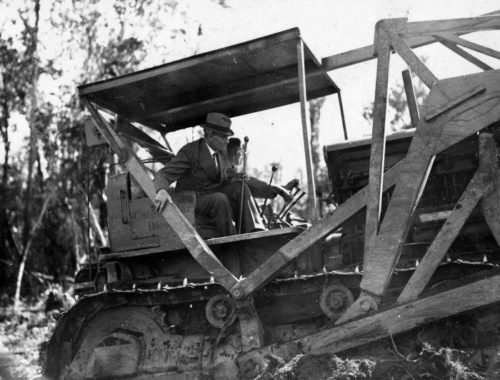
The low-skill occupations break down into machinery operators and drivers and labourers. These are generally occupations that can be taken up with a minimum of previous training.
Because people working in these occupations have a very high proportion of Maori, their voting patterns inevitably reflect positive sentiment towards the Maori-heavy parties. All four of these parties did better among people in this group than the Labour Party, except for the one case of voting Internet MANA in 2014 and working as a machinery operator and driver.
New Zealand First is the favoured party for those working in low-skill occupations. Voting New Zealand First in 2014 had a correlation of 0.64 with working as a machinery operator or driver, and a correlation of 0.60 with working as a labourer.
Voting Maori Party in 2014 had a correlation of 0.52 with working as a machinery operator or driver, and one of 0.49 with working as a labourer. It was slightly weaker for Internet MANA: voting for them had a correlation of 0.43 with working as a machinery operator or driver, and one of 0.34 with working as a labourer.
The strongest correlations with any party, however, were with the Aotearoa Legalise Cannabis Party. Working as a machinery operator or driver had a correlation of 0.65 with voting for the ALCP in 2014, and working as a labourer had a correlation of 0.71 with voting ALCP in 2014.
This is probably because cannabis use is characteristic of the societal outsider, and people who work low-skill occupations are very often outsiders for a variety of reasons, such as not being native English speakers, or being from families where education was not considered important, or because they have an illness that makes employment in an occupation of greater responsibility impossible.
It’s also at least partly because people in low-skill occupations are paid so poorly that it’s easy to decide to just not give a shit anymore.
Voting for the Labour Party in 2014 had a correlation of 0.51 with working as a machinery operator or driver, and this reflects the degree of union influence at the sort of workplaces likely to employ people in these occupations. This contrasted with the not signficant correlation of 0.13 between voting Labour in 2014 and working as a labourer.
Exposing the degree to which the Greens represent primarily middle-class urban elites, there was a moderately strong negative correlation of -0.42 with working as a machinery operator or driver and voting Green in 2014. This was not quite as strong for labourers, for who the correlation was -0.21.
Evidently, few people working in these occupations have an interest in environmentalism or international affairs.
These negative correlations for the Greens are striking because they are even stronger than those for the Conservative Party. The correlation between voting Conservative in 2014 and working as a machinery operator or driver is -0.25, and with working as a labourer it is only -0.09.
At first it might not be clear why a party with pretensions to stand for the poor and vulnerable gets less support from a major group of the poor and vulnerable than a party who openly does not care at all about either.
Those doing it hard are very rarely persuaded to vote National or ACT, and those working in low-skill occupations are not exceptions. Working as a machinery operator or driver had a correlation of -0.55 with voting National in 2014, and one of -0.52 with voting ACT in 2014. Working as a labourer had a correlation of -0.33 with voting National in 2014, and one of -0.61 with voting ACT in 2014.
Concomitant to the general disenfranchisement of people working in low-skill occupations is a low turnout rate. The correlation between working as a labourer and turnout rate in 2014 was -0.36, and between working as a machinery operator or driver it was a strong -0.65. This was probably because a much higher proportion of labourers are of European descent compared to machinery operators or drivers.
*
This article is an excerpt from Understanding New Zealand, by Dan McGlashan, published by VJM Publishing in the winter of 2017.
